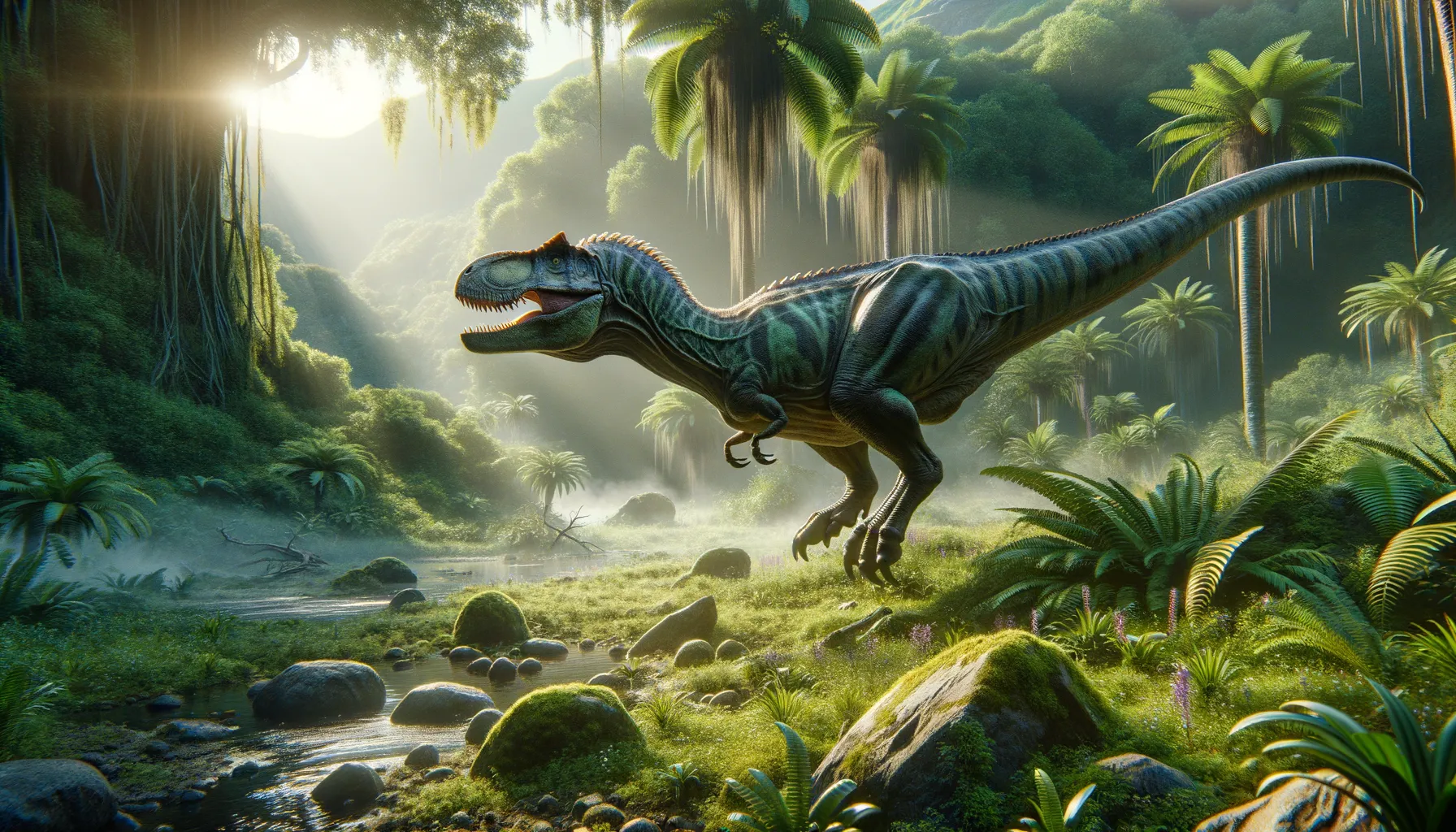
Phaedrolosaurus
Swift predator of ancient times.
Period
Cretaceous
Length
Approximately 2 meters long.
Height
Similar in height to a large bird.
Weight
Roughly comparable to a small dog.
Phaedrolosaurus is a little-known theropod dinosaur discovered in China. It lived during the Cretaceous period and is thought to have been agile and quick. Its fossils, primarily consisting of fragmentary remains, do not provide a complete picture but suggest a diet comprising small prey. Ongoing research aims to uncover more details about its ecology and behavior in its terrestrial environment.
Diet
Phaedrolosaurus likely had a carnivorous diet. It may have preyed upon small animals, including lizards and possibly small mammals. Its teeth suggest an adaptation for cutting flesh.
Hunting
This dinosaur might have used stealth and quick bursts of speed to catch its prey. Its small size suggests that it needed to avoid larger predators while hunting. Cooperative hunting is not evidenced, likely acting alone.
Environmental challenges
Phaedrolosaurus lived in a dynamic and competitive ecosystem. It had to navigate changes in vegetation and periods of climatic variation. Survival depended on its agility to escape larger predators and success in finding food efficiently. Adapting to these challenges was crucial for its existence.
Speed
Probably agile on its feet, but precise speed unknown.
Lifespan
Estimated lifespan based on similar species.
First discovery
First identified from fossil fragments in China.
Fun Facts
- Phaedrolosaurus lived during the Early Cretaceous period, which was roughly 130 million years ago.
- The name Phaedrolosaurus means 'graceful lizard,' as 'phaedro' means graceful and 'saurus' means lizard in Greek.
- Unlike the massive dinosaurs we often think of, Phaedrolosaurus was relatively small, possibly around 2 to 3 meters long.
- Fossils of Phaedrolosaurus have been found in what is now China, giving paleontologists insights into the biodiversity of dinosaurs in that region.
- Phaedrolosaurus was a theropod, a group of bipedal carnivorous dinosaurs, which means it walked on two legs and likely had a diet of meat.
- The specific understanding of Phaedrolosaurus is limited, as only fragmentary remains have been discovered, making it a bit of a mystery in the dinosaur world.
- Phaedrolosaurus adds to the rich tapestry of dinosaur life that existed in the Cretaceous period, highlighting the variety of dinosaur species that roamed the earth then.
Growth and Development
Growth rates for Phaedrolosaurus are not well understood due to limited fossil records. Like other theropods, it may have experienced rapid growth during juvenile stages to quickly reach a more defensible size. Fossils of juveniles are scarce, providing limited insight into its developmental patterns.
Habitat
Phaedrolosaurus inhabited what is now China, likely thriving in forested environments with ample cover. These areas provided the resources and camouflage necessary for hunting and avoiding predators. Access to water sources would have been essential as well.
Interaction with other species
Phaedrolosaurus likely competed with other small theropods for food. It may have been prey for larger carnivorous dinosaurs that shared its habitat. Interaction with herbivorous dinosaurs would primarily revolve around environmental opportunities and territory overlap.
Natural lifespan
Its natural lifespan was likely similar to other small theropods.
Reproduction
Reproduction likely involved laying eggs, as with similar theropods. Nesting sites would have been chosen for safety and proximity to resources. Parental care behaviors are speculative, based on relatives' patterns.
Social behaviour
While specific behaviors are not well documented, Phaedrolosaurus might have been solitary or lived in small groups, similar to other small theropods. Communication would have been limited, focusing on territory and threat displays.
Fossil locations
Fossils of Phaedrolosaurus have been primarily found in China's Xinjiang region. Only partial remains have been discovered, leading to limited information about the full extent of its distribution. Future digs might locate more complete specimens, offering deeper insights.
